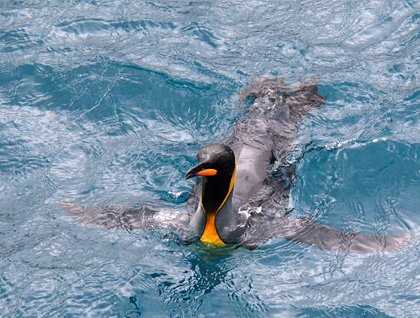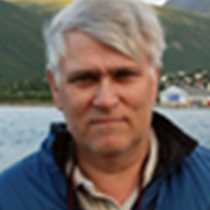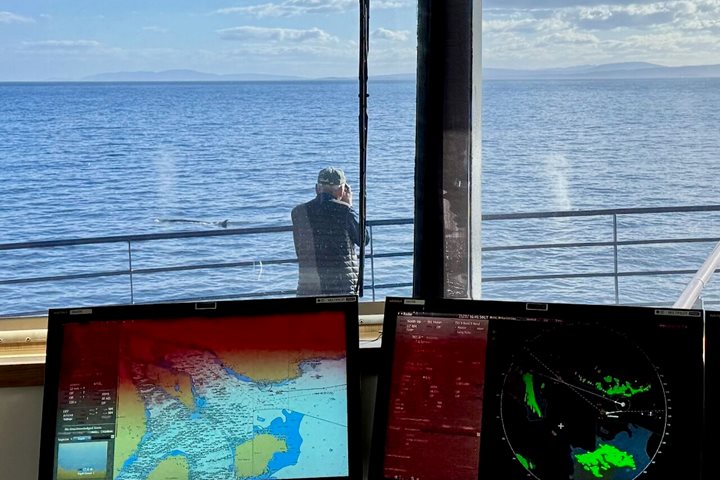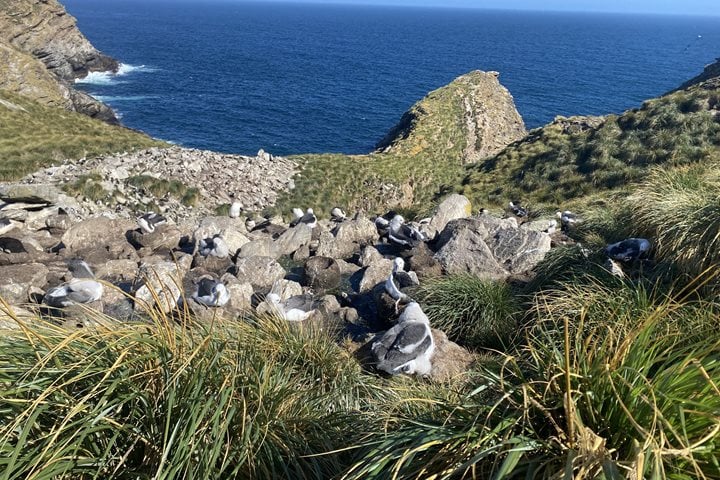Throughout the morning, we continued riding towards South Georgia with tailwinds. This island became the epicenter for the Antarctic whaling when Captain C. A. Larsen established his whaling station at Grytviken in November 1904. So, it was very appropriate to have a presentation around the theme of whaling.
It can be a controversial subject, but do recall that in the heyday of whaling, parts of whales were of great use in many different aspects of society. The street lights in all major U.S. East Coast cities through the 19th century used whale oil as fuel. Into the early 1960s, whale oil was used in cosmetics, lubricants, processed foods, and as base to produce margarine, just to mention a few. Most will know Norway, Japan, and Iceland are still whaling, but few will acknowledge that even today whaling is still to be encountered in U.S. waters.
During lunch, after more than two full days sailing, we finally reached this mystical and mythical island. The weather was for sure not on our side, or at least not ideal. Headland in his excellent biography regarding South Georgia (1984) wrote about any outing: “Advice for trekking is to hope for good weather but be fully prepared for the worst.”
Gusting gale winds and sometimes showers and large swells was our environment, but our captain and expedition leader tried to work out a location with protection from the high seas to set our feet on solid ground and this became Right Whale Bay, on the very far northeastern side of South Georgia. This bay houses a large breeding colony of king penguins and is also a major breeding beach to Antarctic fur seals.
As we approached into the more sheltered waters, we were suddenly surrounded by king penguins approaching the ship. Fur seals in an endless stream were porpoising through the water. They were mainly females heading to the beach to nurse their pups or going to sea to feed for a four to five days. Some guests out at the bow caught a brief view of the rare pipit, the only songbird to reach beyond the Antarctic convergence. The scenery was overwhelming and anyone visiting this unique location will always remember the first sighting and landing. Welcome to South Georgia!
Captain Cook, most likely the first to land, 17th January 1775, and more properly map the coastline, was not impressed of the island. He declared in his journal it was a “horrible place and more or less useless as it was covered with ice and snow.” Although he did land to fly the sign and took possession of the Country in his Majestys name…” [George III]. He did make a note, “we shot two [ducks] and found them most delicate eating.”
His naturalists onboard the ship, Fosters, father and son, and the Swedish botanist had a slightly different view on the island’s impressive wildlife and wrote in their diaries about the teaming wildlife, “sea bears,” and large penguins in huge numbers and listed a large number of bird species, which even included the endemic pipit.
After lunch, it was time to gear up with all waterproof equipment available and soon we made a landing and were able to judge for ourselves whether James Cook or his naturalists were correct.
We were to land on one of many high energy beaches along the coast. It was gusting winds with whirlpools and rain, which sometimes turned into hail. At home, not even the cat would go outside, but the beach was cluttered with penguins and fur seals, and even some elephant seals. It was a great temptation to visit them, and no weather would stop any of us from doing so. A team of six boat catchers were waiting for each Zodiac as we breached through the swell and landed at the beach. The whole afternoon was spent exploring the site. No other bird can pose like a king penguin and for sure we can only confirm Cook’s naturalists had the right idea about this magical location, even a day with howling winds and rain.
Back onboard it was time to dry out all the gear, including our camera equipment. The evening started with our regular Recap and was followed by an Argentinian Asado dinner. This is all about meat in almost any form and strong Malbec wine, finished with a tasty dessert, “Don Pedro” (ice cream saturated with whisky). Of course, for those not into meat, both fish and vegetarian dishes were on the buffet table.
Great start of our visit here in South Georgia and much more to come.







